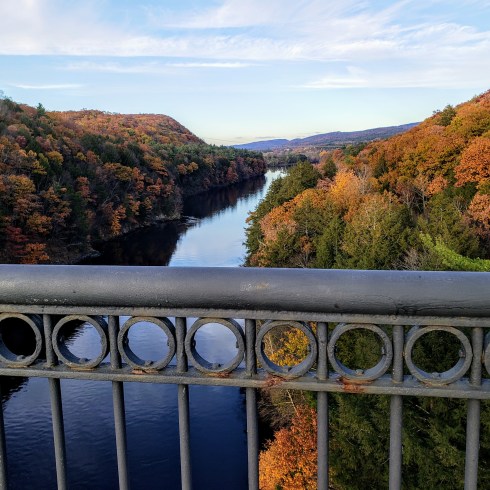This is going to be an odd post which will start out sweet and end up a bit sour, but I can promise you that it will be colorful throughout. There’s one aspect of Salem’s history that I never seem to be able to cover completely, despite the longevity of this blog: its horticultural history. Salem was really famous for its horticulture a century or so ago: you can’t browse through a stack (or a database) of house and garden magazines from the first half of the twentieth century without encountering articles on the “old–fashioned” gardens of Old Salem. Several really notable cultivators and landscapers lived here, and one still does! There is continuity: the city still has some wonderful private and public gardens: among the latter are the Ropes Mansion and Derby House gardens, which are open to the public. There are so many flowering trees and to see in Salem just while walking down the street, especially at this time of year or a bit earlier. So I’ve got some nice photos from the past two weeks or so, and that was going to be the exclusive focus of this post: a parade of colors in Salem for Pride month! But, stuff happens, and in the middle of this very a trouble man painted the Bewitched statue in Town House Square red, setting off a wave of national headlines and local commentary. So I think I’ll add Samantha to this colorful mix. But first: Ropes and Derby:





Salem in June: the Peabody Essex Museum’s Ropes Mansion garden is really more of a high/late summer garden, but the Derby House garden at the Salem Maritime National Historic site is perfect in June.
My garden can’t really compete but I do want to show you my lady’s slippers and I really like the meadow rue that blooms at this time of year. I’ve thinned out my rose bushes, because they just don’t earn their keep in my small garden, so I only have the best bloomers and they are putting on a show right now. This the lady’s mantle time too: I’ve been training my younger cat Tuck on a leash, and the minute he gets it on he goes right for it, so you can see pre-bloom last week and bloom this week. Then there is the vertical garden at the new downtown condo building named Brix (not a fan of this building but I do like its exterior embellishments), peonies from around town, an impressive plant for which I need an identification outside the Peirce-Nichols house (baptisia?) and more roses, on Cambridge Street.










So that brings us to more unnatural color: blue trees and a red Samantha. In the side yard adjacent to the Peabody Essex Museum, the trees have been painted bright blue, a very bright royal blue. This is the 27th international installation of the artist Konstantin Dimopoulos’s The Blue Trees, an “environmental call to action” with watercolor which will fade with time. Very striking, especially at this time of year. With no manifesto and paint that was certainly not biologically-safe, a homeless man spray-painted the upper part of the Bewitched statue a few blocks away in downtown Salem in the middle of this past week. Red Samantha didn’t last long; indeed I’ve seldom seen a quicker response by the City. By the end of the day she was cleansed and a gofundme account set up to restore her to her former “glory”. For those of us in the never-Samantha camp, it was hard to bear the comments on social media protesting this act of vandalism as “disgusting” and “disrespectful” because that’s just how we view the statue: as disgusting and disrespectful to the victims of the 1692. Or maybe I should just speak for myself. As the story created regional and national headlines that night and the next day, I just couldn’t bear the use of the word “landmark” applied to this horror: a landmark should be something that one points to with pride, not embarrassment, which is generally how I feel every time I pass by Samantha. Salem Mayor Kim Driscoll praised the quick cleanup by her public services team and opined that “Samantha brings a degree of joy and whimsy to our downtown and has become a landmark location for thousands of visitors to Salem each year” but such craven capitalization on suffering remains incomprehensible to me. To return to my color theme (and lighten up things a bit), there was also a difficult juggling act for those who did not want to praise vandalism by any means, but at the same time thought that Samantha looked better draped in red. Anything could improve that eyesore, and I always see red when I gaze in her direction.



The Blue Trees of Konstantin Dimopoulus; and a fleeting Red Samantha.





































































 One of Darcy’s last photographs, Trinity, Tuck.
One of Darcy’s last photographs, Trinity, Tuck.





























 Embroidery by the book and bursting outside of the book—and the frame— by Peruvian artist
Embroidery by the book and bursting outside of the book—and the frame— by Peruvian artist 





















 A dreamy house—and former tavern—in Montague Center: listing
A dreamy house—and former tavern—in Montague Center: listing 








 All around Montague Center: house & barns, the Book Mill, Valley cats, Viennese heirlooms, the Homestead.
All around Montague Center: house & barns, the Book Mill, Valley cats, Viennese heirlooms, the Homestead.


 Turners Falls, 1877, Digital Commonwealth ( I don’t think all of those streets were filled out!); the fast-flowing river after the Falls; workers’ housing. On the way home, the French King Bridge over the Connecticut River.
Turners Falls, 1877, Digital Commonwealth ( I don’t think all of those streets were filled out!); the fast-flowing river after the Falls; workers’ housing. On the way home, the French King Bridge over the Connecticut River.



























 Provincetown above, including a colorful-yet-solemn “Silent Witnesses” installation beneath the Pilgrim Monument, bearing witness to victims of domestic violence; some 17th-century plague doctors at the Renaissance Faire in Carver below; that’s it for the Renaissance Faire pictures!
Provincetown above, including a colorful-yet-solemn “Silent Witnesses” installation beneath the Pilgrim Monument, bearing witness to victims of domestic violence; some 17th-century plague doctors at the Renaissance Faire in Carver below; that’s it for the Renaissance Faire pictures!

























